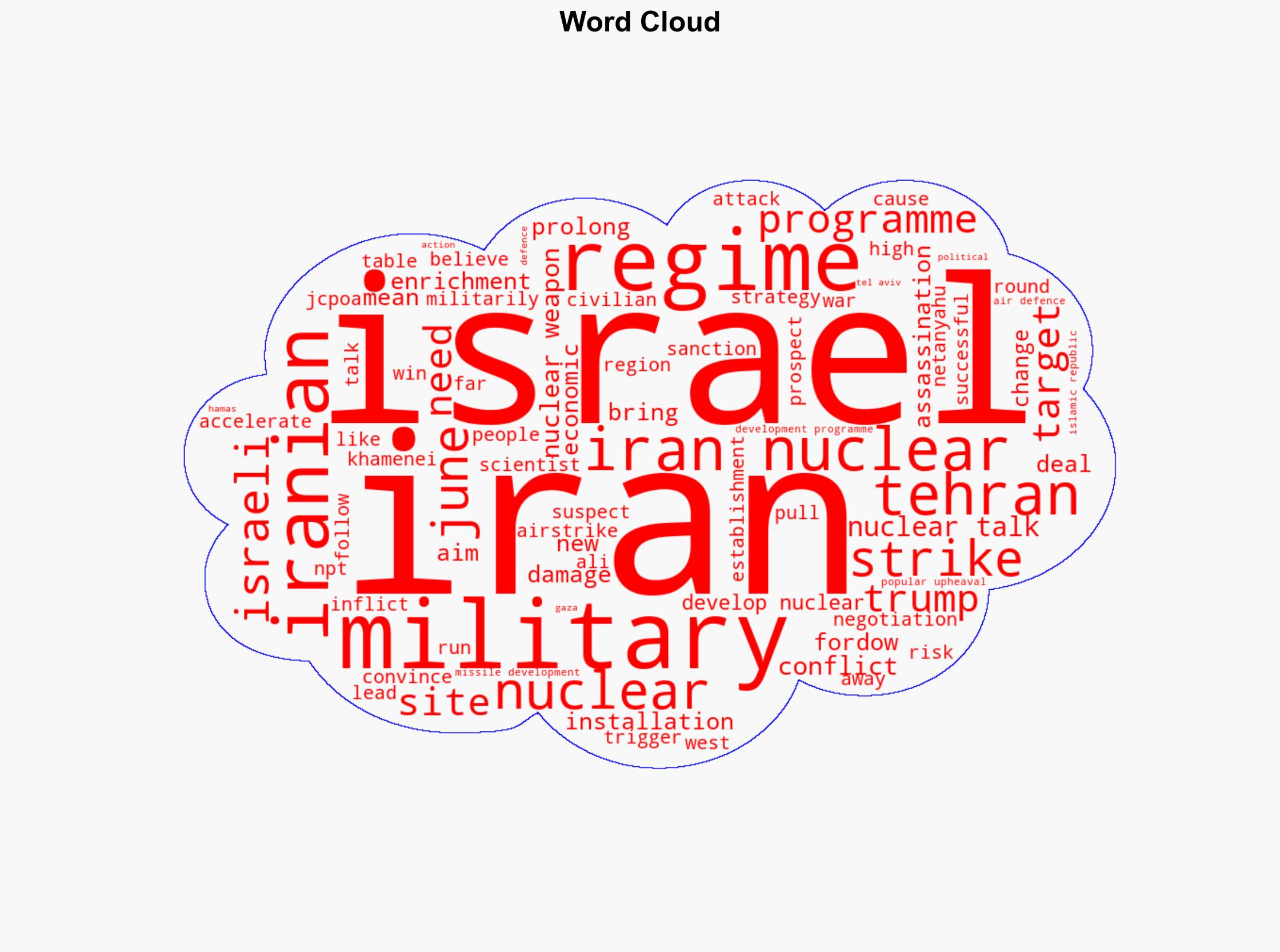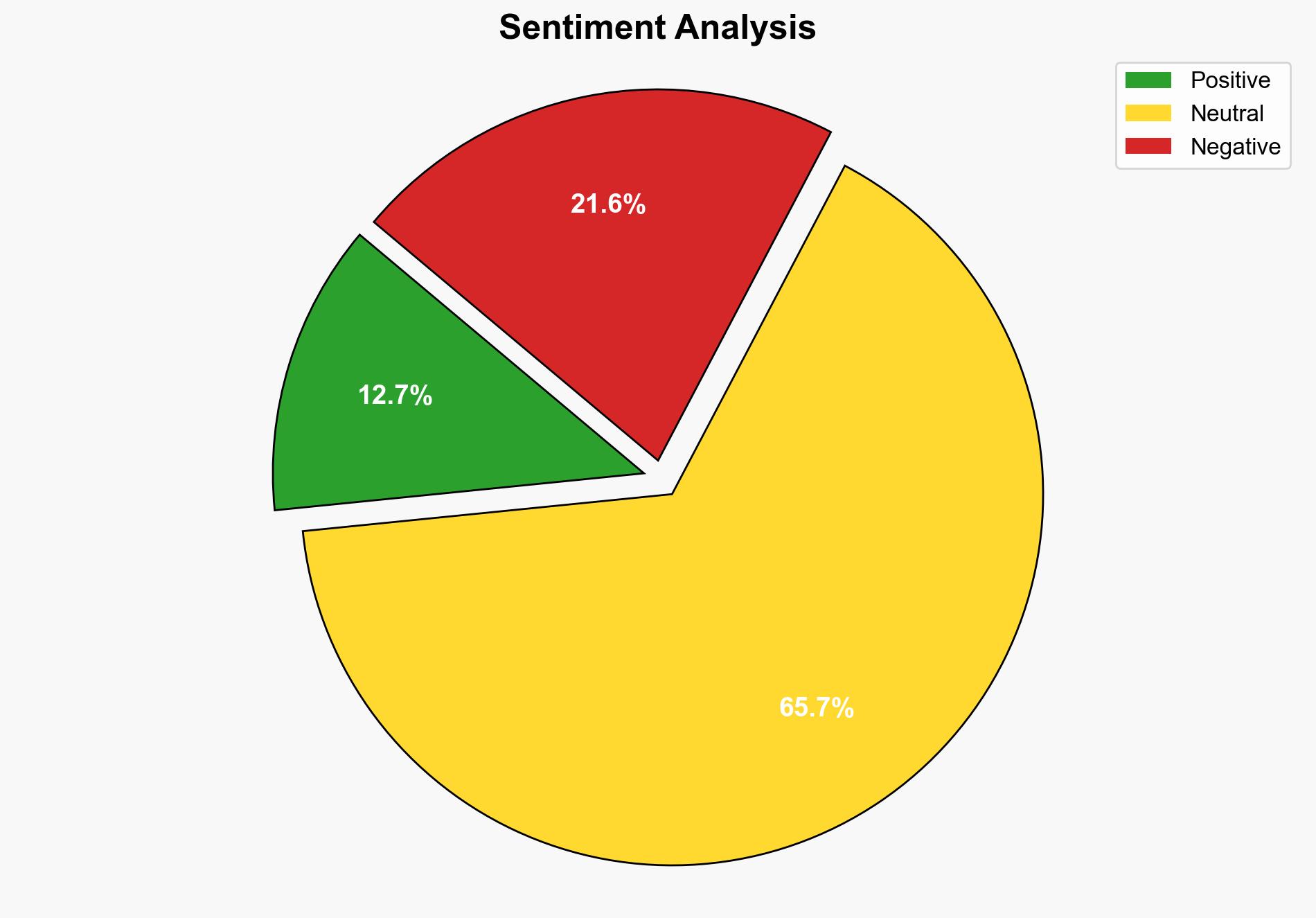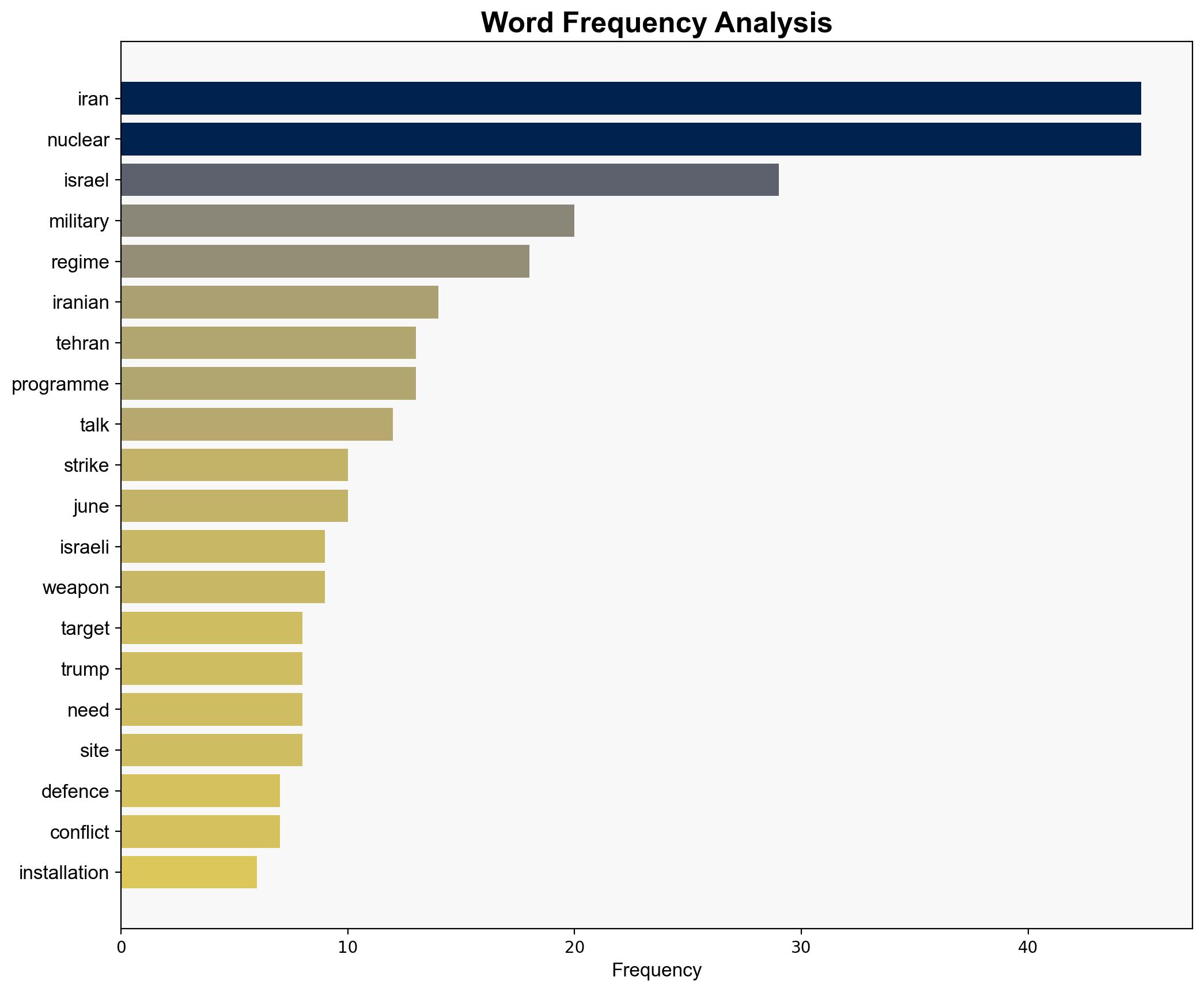Israels high-risk strategy has made an already unstable region more dangerous over the weekend – The Times of India
Published on: 2025-06-15
Intelligence Report: Israel’s High-Risk Strategy Intensifies Regional Instability – The Times of India
1. BLUF (Bottom Line Up Front)
Israel’s recent shift towards a proactive defense strategy, marked by preemptive military actions against perceived threats, particularly Iran, has escalated tensions in an already volatile region. This approach, aimed at curbing Iran’s nuclear ambitions and regional influence, risks provoking significant retaliatory measures and further destabilizing West Asia. It is crucial to monitor these developments closely and prepare for potential escalations.
2. Detailed Analysis
The following structured analytic techniques have been applied to ensure methodological consistency:
ACH 2.0
Israel’s strategy suggests a calculated intention to disrupt Iran’s nuclear capabilities and regional influence through targeted military actions. This hypothesis is supported by a series of strikes on nuclear facilities and key military figures.
Indicators Development
Increased digital propaganda and shifts in travel patterns among regional actors may indicate preparations for retaliatory operations or escalated conflict.
Narrative Pattern Analysis
The narrative of resistance and defense against external aggression is likely to be amplified by Iranian and allied entities, potentially fueling recruitment and incitement.
3. Implications and Strategic Risks
The ongoing tit-for-tat strikes between Israel and Iran could lead to broader regional conflict, involving proxy groups such as Hamas and Hezbollah. The potential for cyber warfare and economic disruptions, particularly in the energy sector, poses additional risks. The destabilization of political regimes in the region could further exacerbate these threats.
4. Recommendations and Outlook
- Enhance diplomatic efforts to de-escalate tensions and encourage a return to negotiations regarding Iran’s nuclear program.
- Strengthen cybersecurity measures to protect critical infrastructure from potential retaliatory cyber attacks.
- Scenario-based projections:
- Best Case: Successful diplomatic interventions lead to a de-escalation of military actions and renewed negotiations.
- Worst Case: Full-scale regional conflict involving multiple state and non-state actors, resulting in significant casualties and economic disruptions.
- Most Likely: Continued low-intensity conflict with periodic escalations, maintaining regional instability.
5. Key Individuals and Entities
Benjamin Netanyahu, Hossein Salami, Mohammad Bagheri, Gholamali Rashid, Ali Khamenei, Ali Shamkhani
6. Thematic Tags
national security threats, cybersecurity, counter-terrorism, regional focus





